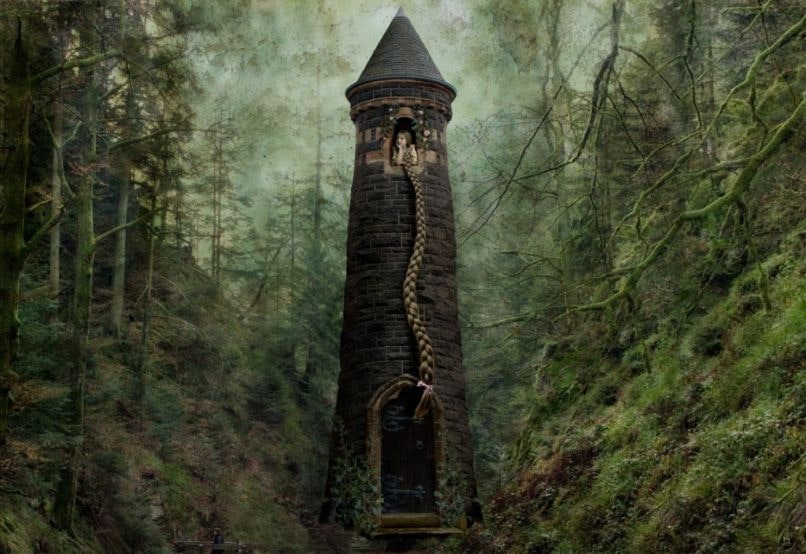DEEP DIVE: The Dark Origins of Classic Fairy Tales
By Lizzie Carr
We all know these classic fairy tales by heart, and most of us know by now that they have slightly bleaker origins. What you may not know, is that those bleak origins are actually quite horrific. From murder to assaults to self-mutilation, these origins from a host of timeless authors are guaranteed to ruin your childhood memories of reading or watching these classics. Sorry, not sorry.
Sleeping Beauty
In the original version of this tale, written by Giambattista Basile in 1634, the princess (named Talia) isn’t awoken by the kiss of true love. While in her deep sleep, a passing king finds her and assaults her. After nine months, she gives birth to two children, only to be awoken when one of the children sucks on her finger and removes the fragment that was keeping her asleep. When Talia finds the king, who is now married, he decides to kill his wife so that he and Talia can be together. The king’s wife tries to kill and eat the babies before the King succeeds in killing her by burning her alive.
Snow White
After ordering the Huntsman to kill Snow White, the Evil Queen asks for him to return not just Snow’s heart but her liver and lungs too (so she can eat them). Snow isn’t put into a deep sleep and is actually dead when she is found. She is also not awoken by the kiss of true love. Instead, the poisonous apple dislodges in her throat because her body is being jostled around, she awakes to find herself on the back of a Prince’s horse who is taking her back to his castle to assault her. The Queen receives her punishment when she is forced to dance in iron shoes that have been in a fire until she dies.
The Little Mermaid
In the original version by Hans Christian Anderson, Little Mermaid still trades her fins for legs. Along with her tongue, the price for getting those legs is that every step is extremely painful, and if the prince marries someone else, she’ll die. Trying to win the prince’s hand in marriage, she dances for him through unbearable pain. Unfortunately, he still decides to marry someone else. Little Mermaid’s sister sells her hair to get a dagger and tells her to kill the prince and let his blood spill onto her feet, which would then transform them into fins again. She is unable to kill the prince as she still loves him, so she dies and dissolves into sea foam.
Little Red Riding Hood
As whimsical as the tale we all know is, Charles Perrault wrote it instead with a simple lesson in mind in 1697. There is no woodsman and no grandmother. Instead, Little Red Riding Hood gets lost, asks the wolf for directions to her grandmother’s house and the wolf gives her wrong directions – then eats her. The lesson? Don’t take advice from strangers. In another version, she eats her own grandmother, cooks her flesh up, and her blood is poured into a wine glass by the wolf.
Cinderella
In Giambattista Basile’s version, Cinderella’s father has remarried but her governess convinces Cinderella to kill the stepmother. Cinderella obliges and snaps her stepmother’s neck with the lid of a dressing trunk. The governess then marries Cinderella’s newly widowed father and expels Cinderella to the kitchen, but she still gets her happy ending. However, in the Brothers Grimm retelling of the tale, when the Prince is searching for Cinderella, the two stepsisters mutilate themselves and cut off parts of their feet so they can fit into the slipper. They almost fool the prince, until he’s alerted by birds to the pool of blood under their feet. The birds then proceed to peck the sister’s eyes out.
Hansel and Gretel
In a French version before the Grimm’s retelling, it is the Devil, not a witch, who wants to kill the children--and he wants to do it in a very particular way. The Devil wants to bleed the children on a sawhorse, but after the children say they don’t know how to get on the Devil has his wife show them how. The children then slit her throat, steal all the Devil’s money, and run off. What makes this more upsetting is that the wife had been trying to help the children too. Talk about ungrateful.
Rapunzel
In the original, Rapunzel lets down her hair, and a prince still climbs it. Only this time, Rapunzel becomes pregnant and when the witch finds out she cuts Rapunzel’s hair and banishes her far away, where she lives her life on the streets with no money and no home (and with twins). The witch also lures the prince back to the castle and pushes him out of the window. Although his fall is broken by thorn bushes, the thorns gauge out his eyes.








